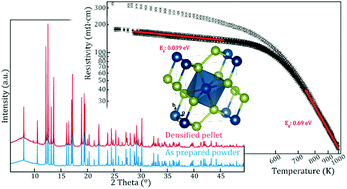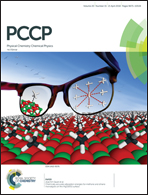Is RuAs2 a candidate for high temperature thermoelectric applications?†
Abstract
The mineral inspired material RuAs2 shows promise as a thermoelectric material with its high stability and attractive band structure. In order to validate these expectations phase-pure polycrystalline ruthenium arsenide was synthesized and densified using Spark Plasma Sintering. RuAs2 is an n-type semiconductor with an indirect band gap 0.69 eV as estimated from temperature dependent resistivity data, while the band gap calculated with DFT is 0.64 eV. The thermal conductivity and electrical resistivity are both high with room temperature values of 16 W m−1 K−1 and 170 mΩ cm respectively, leading to modest thermoelectric properties for the intrinsic system. Band structure calculations suggest that chemical modification should preferably be done at the As site to improve the intrinsic properties. Synchrotron powder X-ray diffraction and Rietveld structural refinements show RuAs2 to be a stable line phase up to 1000 K in both in air and in vacuum, and both as a powder and as a dense pellet. No indication of preferential orientation or material gradients are observed.



 Please wait while we load your content...
Please wait while we load your content...